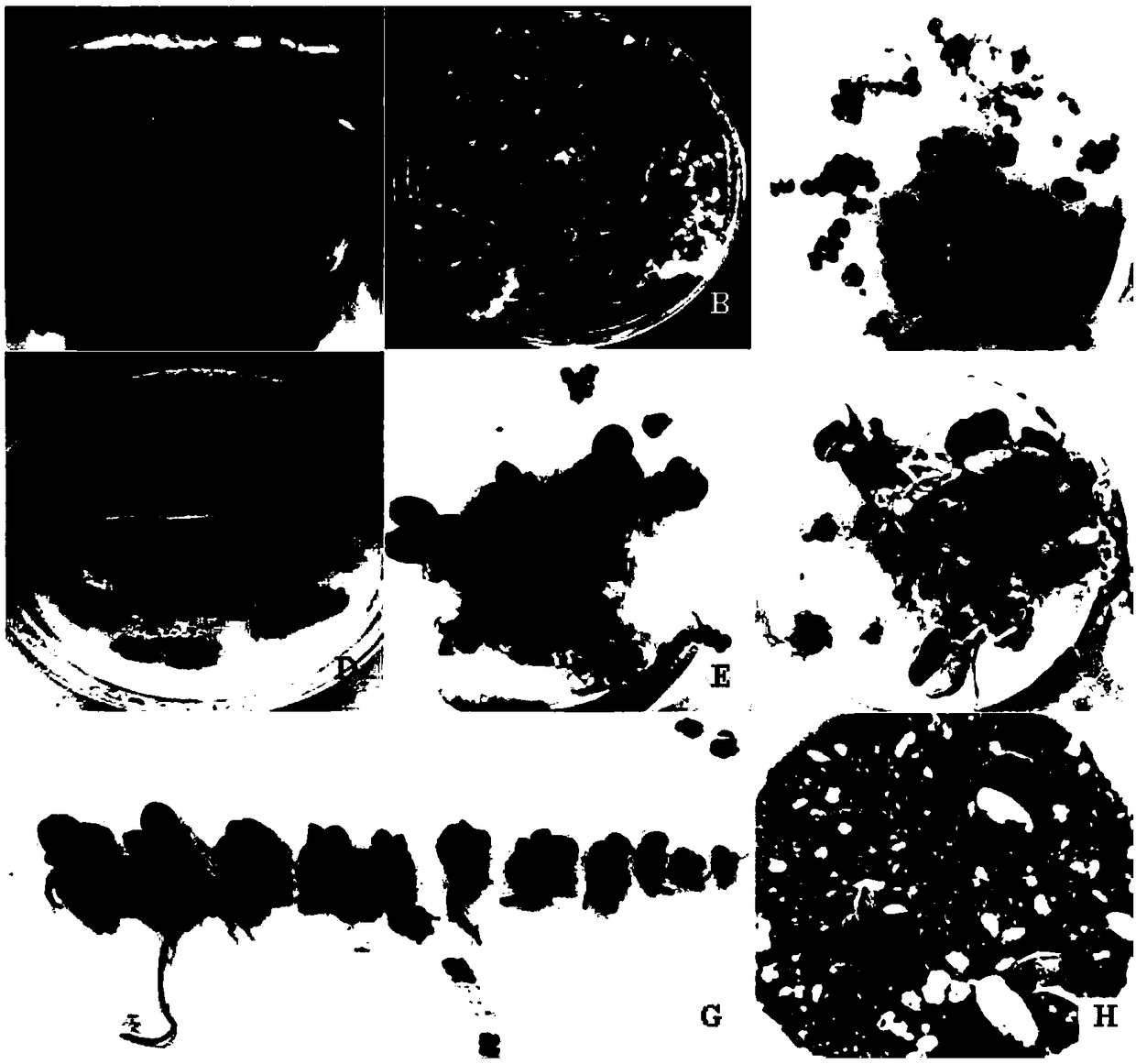Tissue culture method for succulent adromischus marianiae hallii
A technology for tissue culture and succulent plants, applied in the fields of botany equipment and methods, plant regeneration, gardening methods, etc., can solve the problems of inapplicability
- Summary
- Abstract
- Description
- Claims
- Application Information
AI Technical Summary
Problems solved by technology
Method used
Image
Examples
Embodiment 1
[0065] 1. Disinfection of explants:
[0066] Leaf explants soaked in red eggs: take the leaves soaked in red eggs as explants, wash the surface of each leaf with 0.2g of washing powder, and then wash with tap water for 5 minutes to remove surface dirt, and place the explants on an ultra-clean workbench superior. Before inoculation, put the washed red egg blister leaves into a sterilized Erlenmeyer flask, and then add 0.1% HgCl with a volume concentration of 0.1% Tween-20 2 The surface of the solution was disinfected for 3-4 minutes, washed with sterile water for 5 times, each time for 1 minute, and the sterilized explants were soaked in sterile water for 1 minute, and then the sterile water was replaced. Then the washed explants were placed in a sterilized stainless steel dish, and the moisture on the surface of the explants was air-dried for later use.
[0067] 2. Callus induction:
[0068] Stain a little carbenicillin powder on the broken part of the surface-sterilized le...
Embodiment 2
[0085] 1. Disinfection of explants:
[0086] Leaf explants soaked in red eggs: take the leaves soaked in red eggs as explants, wash the surface of each leaf with 0.2g of washing powder, and then wash with tap water for 5 minutes to remove surface dirt, and place the explants on an ultra-clean workbench superior. Before inoculation, put the washed red egg blister leaves into a sterilized Erlenmeyer flask, and then add 0.05% Tween-20 with 0.1% HgCl 2 The surface of the solution was disinfected for 3-4 minutes, washed with sterile water for 5 times, each time for 1 minute, and the sterilized explants were soaked in sterile water for 1 minute, and then the sterile water was replaced. Then the washed explants were placed in a sterilized stainless steel dish, and the moisture on the surface of the explants was air-dried for later use.
[0087] 2. Callus induction:
[0088] Stain a little carbenicillin powder on the broken part of the surface-sterilized leaf explants, inoculate th...
Embodiment 3
[0105] The red egg vesicles were cultivated according to the method of Example 2, except that the hormone content in the induction medium selected for the induction and proliferation of the green spherical single particles in step 3 was zeatin 1.5 mg / L and 0.5 mg / LIAA. The results showed that the number of spherical particles obtained in the culture medium of 1.5mg / L zeatin combined with 0.5mg / L IAA was 60 / dish.
PUM
 Login to View More
Login to View More Abstract
Description
Claims
Application Information
 Login to View More
Login to View More - R&D Engineer
- R&D Manager
- IP Professional
- Industry Leading Data Capabilities
- Powerful AI technology
- Patent DNA Extraction
Browse by: Latest US Patents, China's latest patents, Technical Efficacy Thesaurus, Application Domain, Technology Topic, Popular Technical Reports.
© 2024 PatSnap. All rights reserved.Legal|Privacy policy|Modern Slavery Act Transparency Statement|Sitemap|About US| Contact US: help@patsnap.com









